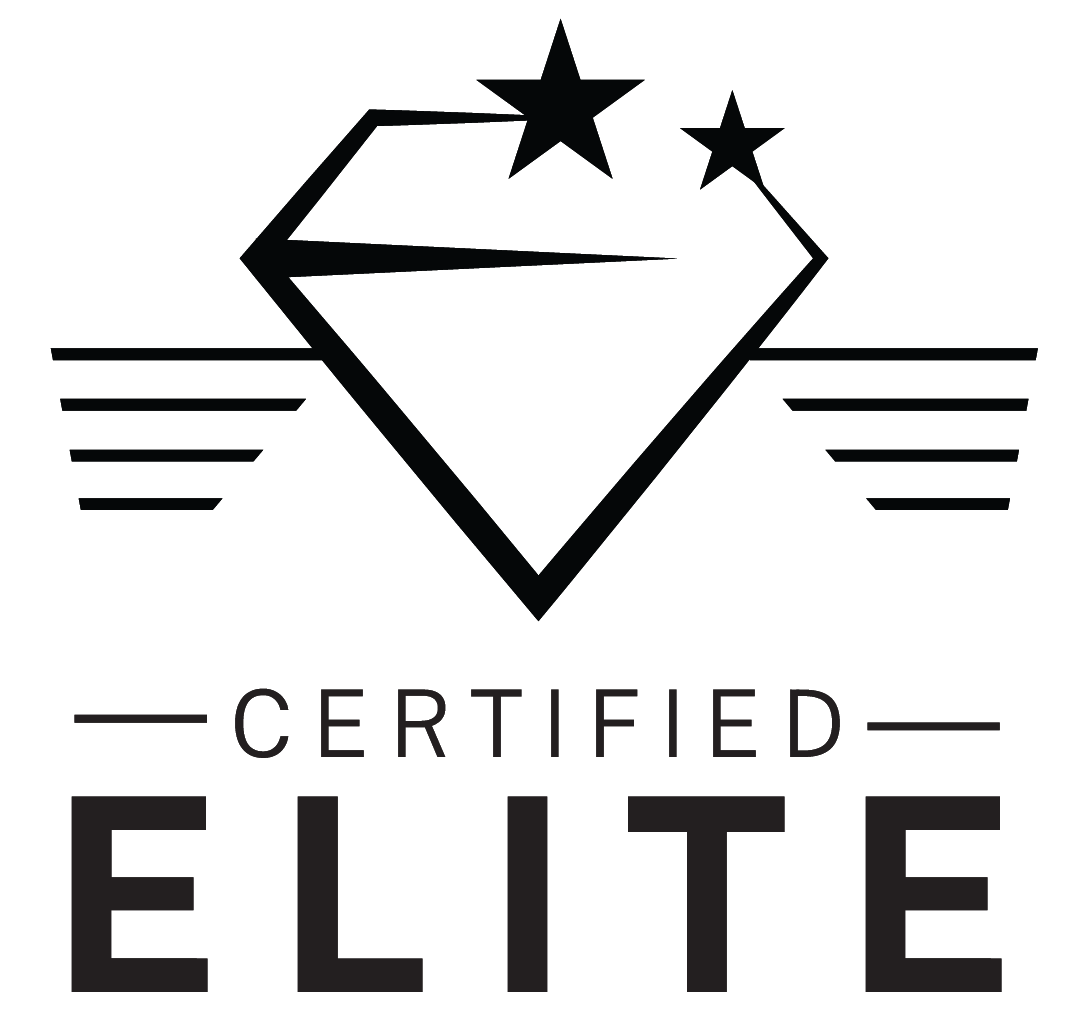WHO NEEDS OSHA 40 HOUR HAZWOPER?
Workers involved in direct clean-up actions, including:
- Construction and Remediation
- Clean-up workers
- Hazardous Waste Operations
- Hazardous Materials Handling
Examples of employees that typically require OSHA 40 Hour HAZWOPER Training:
- Site Worker
- Site Supervisor
- Drilling, Boring, and Sampling Personnel
- EH&S Personnel
- Hazmat Operations, First Responders & Emergency Responders
- Fire and Fire Safety Personnel and Officers
- Site Safety Officer
Our seasoned Instructors emphasize a practical approach to worksite health and safety so that attendees understand HOW to recognize site hazards and WHAT appropriate steps are required to safeguard personnel and prevent illness & injuries on site.
40-Hour OSHA HAZWOPER certification is required for site workers, emergency response personnel, and those who remediate (clean-up) hazardous waste at controlled and uncontrolled hazardous sites and/or may have the potential for exposure to IDLH (Immediately Dangerous to Life and Health) atmospheres.
The emphasis of OSHA 40-Hour HAZWOPER training is providing the ability to evaluate site conditions and recognize hazards and risks. This requires the ability to identify and evaluate conditions where assistance may be required and act accordingly.
CERTIFICATION
Certification (including a printed Certificate- suitable for framing and a wallet ID card) is awarded at the completion of training and passing a written exam. Qualitative fit-testing is available at an additional fee.
To receive fit-testing, you must produce a valid medical clearance (within the prior 11-months). For more information, visit the Respiratory Protection page.
OSHA 40 Course Topics
- Chemical Hazard ID Systems
- Competent Person
- Confined Spaces
- Decontamination Procedures
- Dress Out Exercise
- Electrical Safety
- Emergency Response Procedures
- Excavations
- Fall Protection
- Fire Protection
- Hand and Power Tools
- Handling Drums & Containers
- HAZWOPER Regulations
- Hazard Communication
- Health Hazards
- Material Handling, Storage & Use
- Medical Surveillance
- Meters and Instrumentation
- Motor Vehicles & Mechanized Equipment
- Occupational Heat Exposure
- Personal Protective Equipment
- Planning and Organization
- Powered Industrial Vehicles
- Respiratory Protection
- Safety Principles
- Sampling and Packaging
- Site Controls
- Toxicology
- Ionizing Radiation
- 40 Hour HAZWOPER Exam
Learning Objectives
Upon successful completion of the OSHA 40 Hour HAZWOPER Classroom Training, students will:
- Understand how hazardous materials are handled, identified & responses to exposure
- Learn the importance of the Health and Safety Plan (HSP)
- Incorporate knowledge of what to do in case of site emergencies
- Know appropriate safety methods and work practice controls
- Recognize signs and labels that are used to alert to danger involving hazardous material
- Receive certification for OSHA 40 Hour HAZWOPER Training under 29 CFR 1910.120
Time to complete this course: 40 Hours (includes mock dress-out)
OVERVIEW
This course provides the OSHA 40-hour training requirement mandated by OSHA 29 CFR 1910.120. This course will cover health and safety procedures, chemical protective clothing, decontamination, and general techniques for managing hazardous materials.
This class is highly interactive and requires students to fully participate to receive a course certification. All training materials are provided for the course. Students will participate in group discussions, a tabletop exercise and a hands-on practical followed by an examination on the final day.
Qualitative respirator fit-testing is available for an additional fee. Students who elect to receive fit-testing must produce a copy of their medical certification and must be clean shaven before fit-testing can be conducted; please refer to OSHA’s Respiratory Protection Standard, 1910.134 for more information. To schedule the fit-test, please contact Customer Service at 800-711-2706, (select option 1) or register at: https://www.csregs.com
DAY ONE
OPENING
1. Administrative
2. Course introduction
REGULATORY DISCUSSION
1. Environmental Protection Agency
A. Resource Conservation and Recovery Act (RCRA) 1976
B. Comprehensive Environmental Response, Compensation and Liability Act (CERCLA) 1980
C. Superfund Amendments and Reauthorization Act (SARA) 1986
3. Occupational Safety and Health Administration (OSHA)
A. Employer & employee rights and responsibilities
B. Hazwoper, 29 CFR, 1910.120 / 1926.65
GENERAL SAFETY HAZARDS
1. Types of hazards
2. Personal Safety Issues
3. General Safety Issues
4. Fall Protection
5. Excavation Safety
6. Hand and Power Tools
7. Lock out/Tag out
8. Heavy Equipment
PLANNING AND ORGANIZATION
1. Site Characterization
2. Health and Safety Plans
HAZARD COMMUNICATION FOR HAZWOPER
1. NFPA 704
2. DOT System
3. HMIS III
4. Safety Data Sheets
5. Other Identification Systems
CHEMICAL HAZARD ID SYSTEMS
1. Properties of chemicals
A. Toxic
B. Reactive
C. Ignitable/Combustible
D. Corrosive
DAY TWO
TOXICOLOGY
1. Acute vs. Chronic
2. Immediate vs. Delayed Effects
3. Reversible vs. Irreversible
4. Routes of entry
A. Inhalation
B. Absorption
C. Ingestion
D. Injection
E. Contact
5. Chemical interaction effects
6. Target organ responses
7. Dose/Response relationship
8. Exposure Limits
IONIZING RADIATION
1. Fission
2. Particles
A. Alpha
B. Beta
C. Gamma
D. Neutrons
3. Radiation Meters
4. Exposure Doses
RESPIRATORY PROTECTION
1. Respiratory Protection Program
A. Selection
B. Training
C. Sanitizing
D. Inspection
E. Maintenance
HEAT STRESS
1. Factors
2. Heat Illnesses
A. Heat Rash
B. Heat Cramps
C. Heat Syncope
D. Heat Exhaustion
E. Heat Stroke
3. Related Stressors
4. Pre/Post Entry Assessments
5. Prevention
MEDICAL SURVEILLANCE
1. Surveillance
A. Pre-Assignment Examinations
B. Periodic Examinations
C. Termination Examinations
2. Treatment
A. Emergency
B. Non-emergency
3. Record Keeping
DAY THREE
METERS AND MONITORING
1. Reasons for monitoring
2. Sampling Techniques
3. Meter Characteristics
4. Combustible Gas Indicators
5. Photo Ionization Detectors
6. Flame Ionization Detectors
7. Vapor Analyzers
8. Toxic Meters
9. Multi-gas Analyzers
10. Colorimetric Detectors
11. Sound Level Meters
12. Heat Stress Monitors
13. Instrument Safety
14. Meter Limitations
FIRE PROTECTION REQUIREMENTS
1. Classes of Fire
A. Class A
B. Class B
C. Class C
D. Class D
E. Class K
2. Fire Extinguishers
3. Open Yard Storage
4. Fire Brigades
5. Foams
CONFINED SPACES
1. Overview
2. Statistics
3. Training
4. Non-permit Required Confined Spaces
5. Permit Required Confined Spaces
6. Entrants
7. Attendants
8. Supervisors
9. Confined Space Rescue
HANDLING DRUMS AND CONTAINERS
1. Container Hazards
2. Inspecting Containers
3. Classification of Containers
4. Handling Containers
5. Staging
6. Bulking
7. Shipping
SAMPLING AND PACKAGING
1. Sampling Locations
2. Sample Planning
3. Sample Types
4. Sampling Strategies
A. Biased
B. Unbiased
5. Field Logs
6. Chain of Custody
DECONTAMINATION
1. Decontamination Planning
2. Decontamination Methods
A. Physical Removal
B. Chemical Deactivation
C. Decontamination Solutions
3. Decontamination Effectiveness
4. Decontamination Procedures
5. Emergency Decontamination
SITE EMERGENCIES
1. Personal Emergencies
2. Work Site Emergencies
3. Public Emergencies
4. Causes of Emergencies
5. Emergency Response Plans
A. Identification of Personnel
i. Incident Commander
ii. Health and Safety Officer
iii. Response Teams
B. Entry
C. Rescue
6. Site Maps
7. Site Control
8. Accountability
9. Emergency Evacuation
10. Coordination with Government Agencies
A. National Contingency Plan
11. Emergency Site Safety
DAY FOUR
INTRODUCTION-ADMINISTRATIVE
ANNUAL REGULATORY UPDATES
1. OSHA
2. EPA
SITE CHARACTERIZATION
Group activity for a scenario site, students will:
1. Identify Site Hazards
2. Identify Monitoring/Evaluating Requirements
3. Identify Controls for those Hazards
SITE PLANNING
Group activity for a scenario site, students will:
1. Determine the Organizational Structure
2. Identify Site and Emergency Response Plans
3. Discuss After Action Procedures & Critique
EXERCISE SCENARIO
This is a group activity for an emergency at the scenario site.
*PRACTICAL
Students don and doff totally encapsulating suits/SCBA for a specified activity.
FINAL EXAMINATION
What is OSHA 40 Hour HAZWOPER Training?
OSHA 40 Hour HAZWOPER Training was designed for workers who directly deal with or handle hazardous materials. This includes removing or handling underground tanks or piping, handling contaminated soil and/or groundwater, subsurface investigations, and construction work in which hazardous materials may potentially be present. This Training is also required in situations where HAZMAT is prepared, packaged, labeled, marked, stored, or shipped for disposal and for any facility wherein hazardous wastes are treated, stored, or disposed of.
How often do I need 40 Hour HAZWOPER Training?
40 Hour HAZWOPER Certification is good for a year after your initial Certification. After that, you will need to take 8 hour refresher Training annually to learn about any updates or changes to HAZWOPER.
Can I take OSHA 40 Hour HAZWOPER Training online?
40 hr OSHA HAZWOPER Training can be completed using in-class training or online training, but if you choose the online course, you still will be required to attend an in-class hands-on training portion to get certification.
How long will it take to get my OSHA 40 Hour HAZWOPER Certification?
Full payment is required before certificates can be released. Once you complete your final exam, we will mail the certificate to the EH&S contact at the company you're employed with. Certificates are shipped twice a week, Tuesdays and Fridays, via U.S. mail. Expedited certificates are available if needed. Please call us at 800-711-2706 for information.
What OSHA standard covers OSHA 40 Hour HAZWOPER Training?
Every 40 hr HAZWOPER Training Course you take must include training requirements under 29 CFR 1910.120(e) and have hands-on Training to be compliant with OSHA and keep workers safe while on the job!
What is the difference between 24 and 40 Hour HAZWOPER?
OSHA 40 Hour HAZWOPER Training is designed more for workers that deal with hazardous materials directly, including facilities where HAZMAT is prepared, packaged, labeled, marked, stored, or shipped for disposal and for any facility wherein hazardous wastes are treated, stored, or disposed of. 24 Hour Training is for workers working at these facilities but who don’t have any responsibility to deal directly or handle any hazardous materials EX: drillers, surveyors, contractors, administrative personnel & drivers. Many companies will make workers get the 40 Hours course to make sure they are ready for any situation just in case.
How do I get an OSHA HAZWOPER Certification?
All HAZWOPER courses can be taken either online or in a classroom setting except OSHA 40 Hour HAZWOPER and the upgrade from 24 hour to 40 hour training course. Both of these courses must include an in-class hands-on portion to be compliant with OSHA.
What is the purpose of HAZWOPER?
OSHA created HAZWOPER, or Hazardous Waste Operations and Emergency Response, to teach employees involved with hazardous waste cleanup, disposal, or emergency response to protect themselves at work.
What are the levels of HAZWOPER Training?
There are two HAZWOPER Training levels. OSHA 40 Hour HAZWOPER- Workers responsible for cleanup operations. 24 Hour HAZWOPER Training is for Occasional site workers that aren’t involved in cleanup operations. There are also two other courses related to HAZWOPER. The 8 Hour HAZWOPER course is the refresher course for both 24 and 40 Hour HAZWOPER and the 16 Hour Course that upgrades 24 hour certification to 40 Hour.
What does HAZWOPER Stand for?
HAZWOPER is an acronym for Hazardous Waste Operations and Emergency Response
To view our Refund and Reschedule policy, please
click here.
 UPCOMING IN-PERSON CLASSES
UPCOMING IN-PERSON CLASSES























































